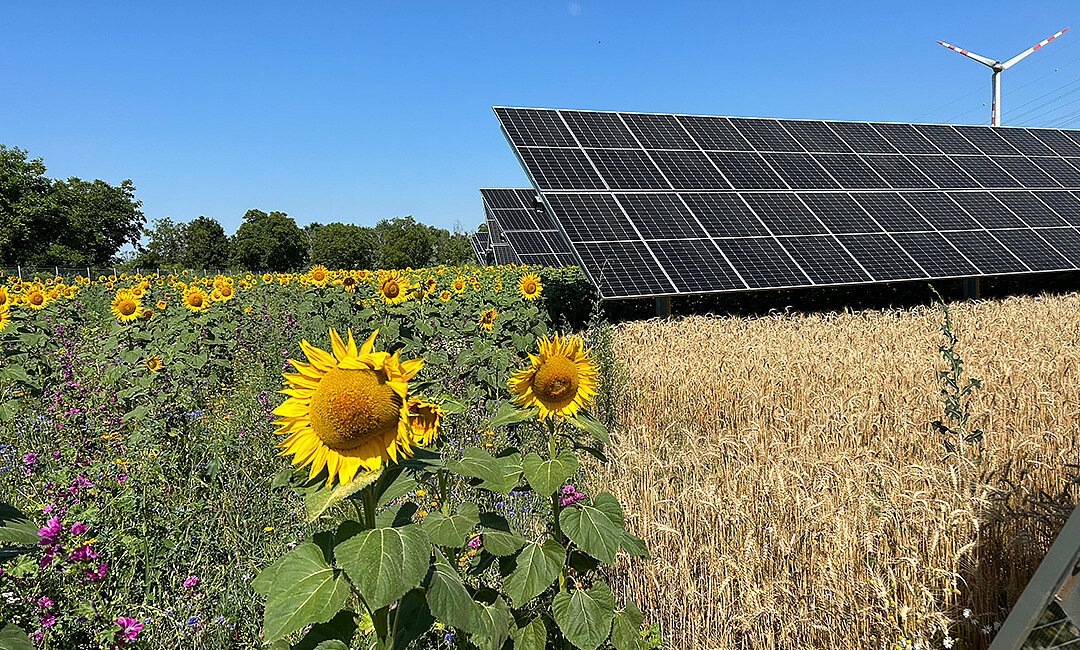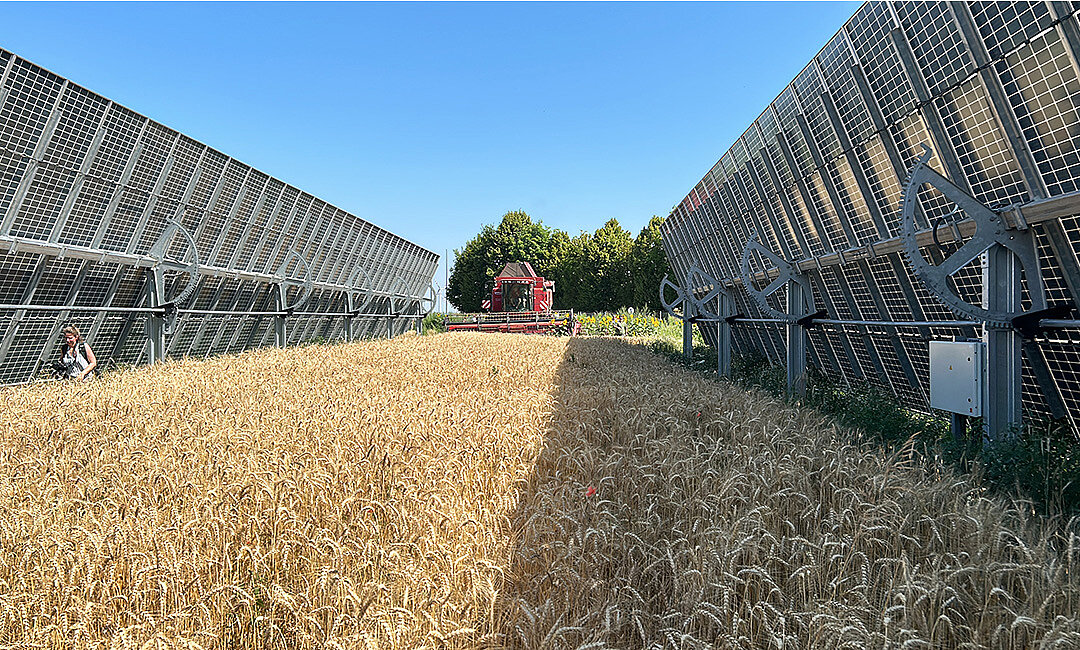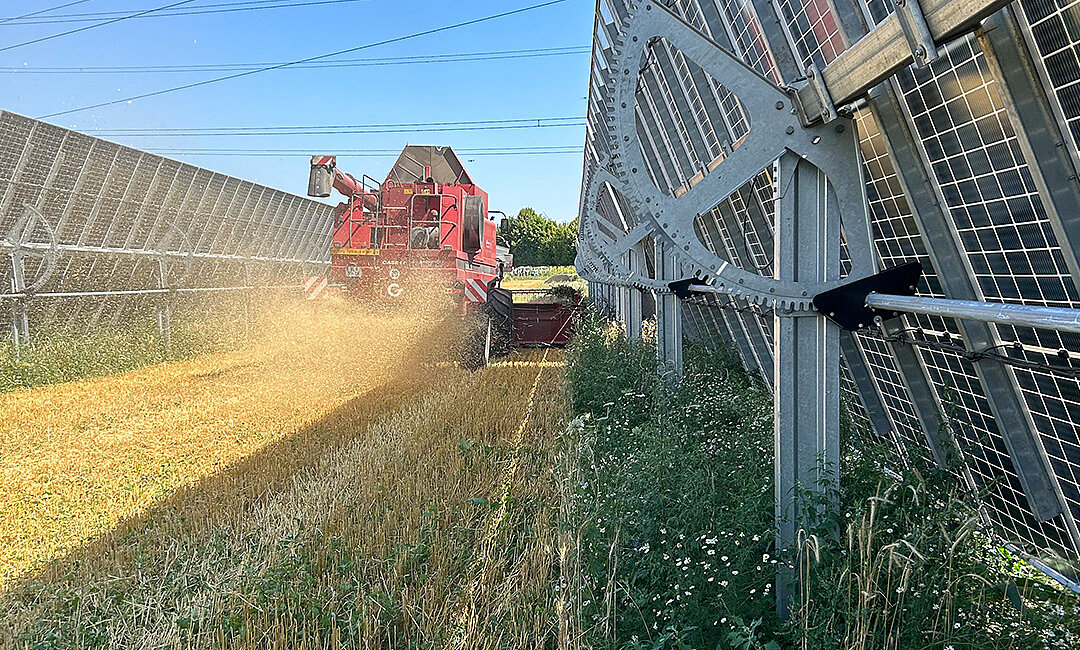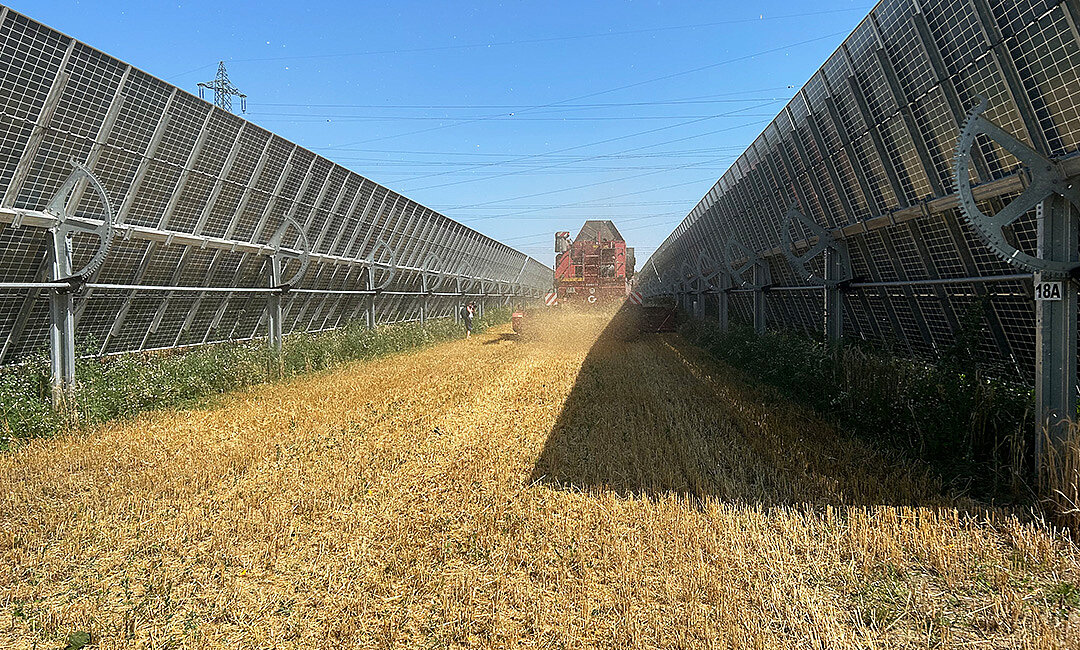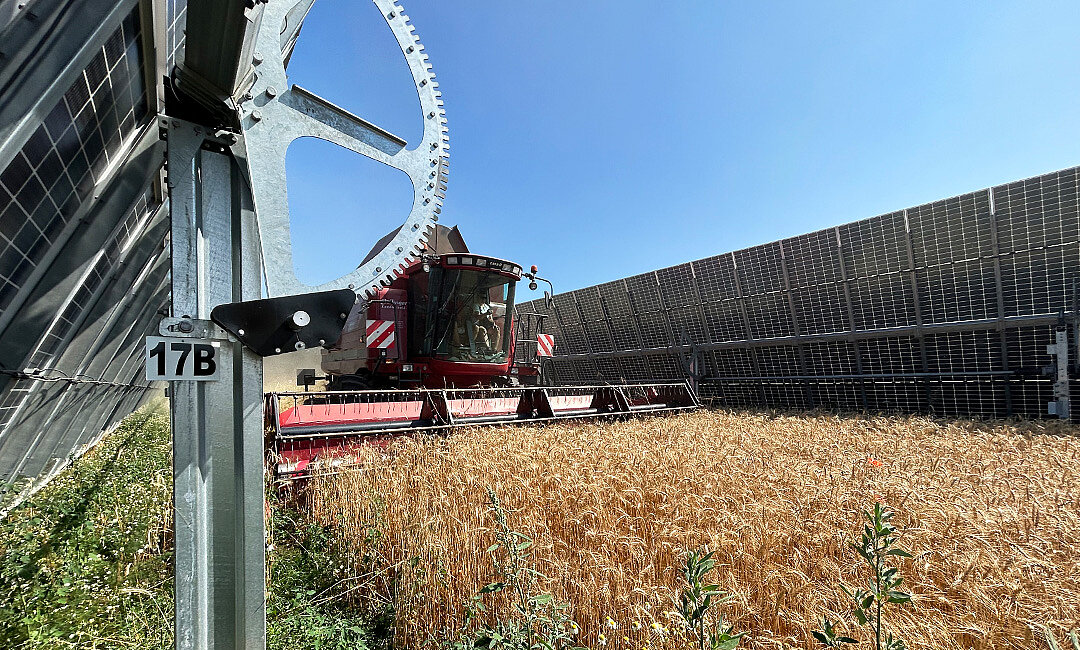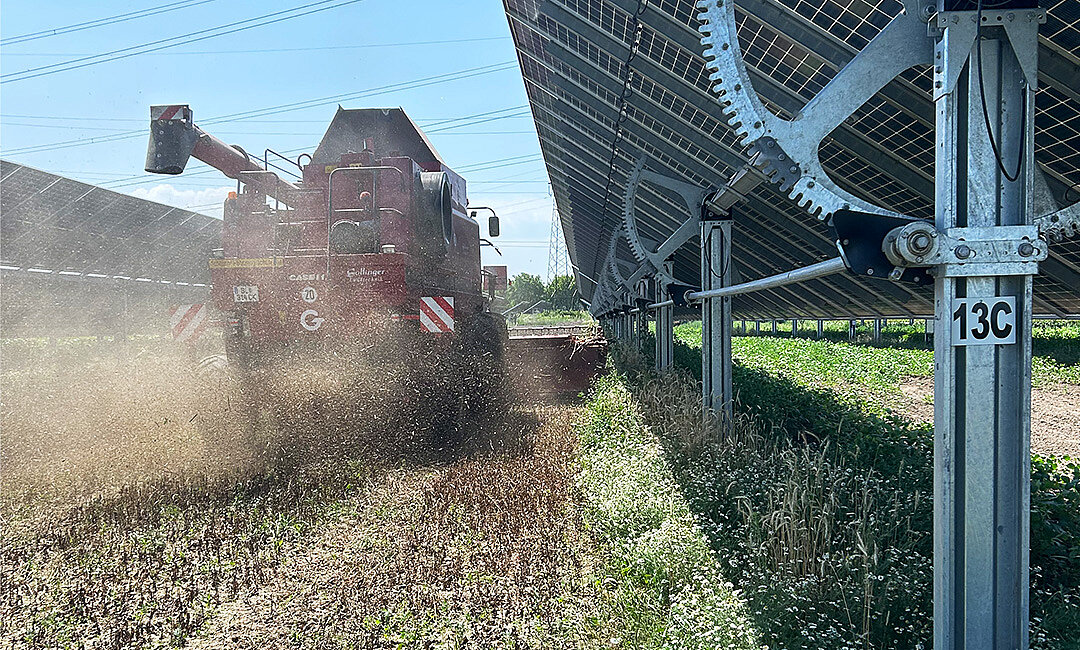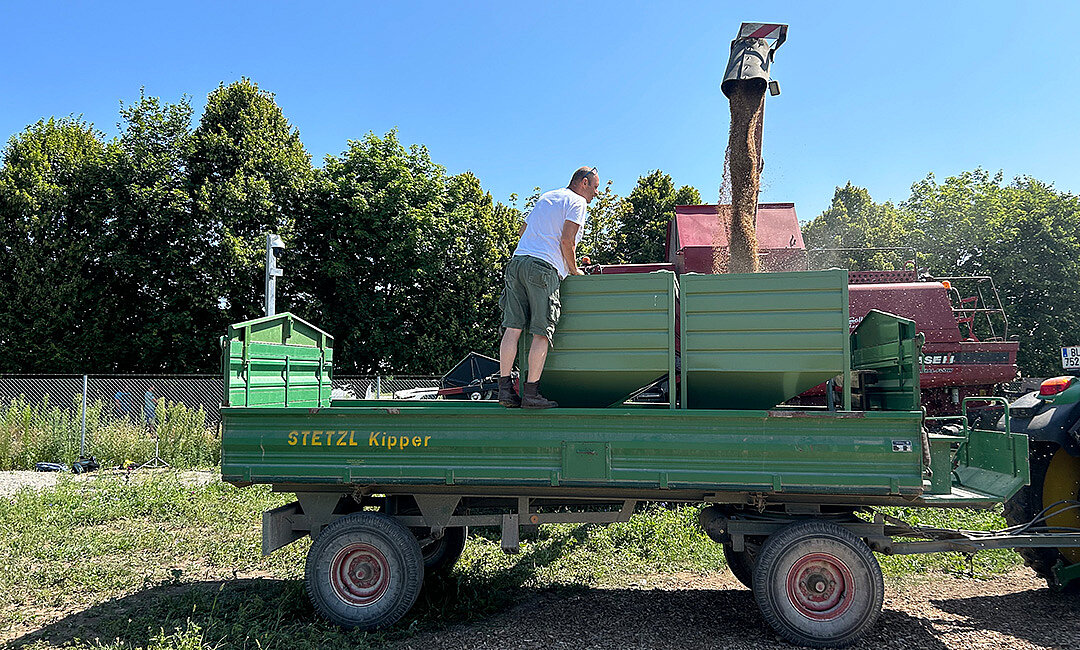
Hauptinhalt
Hauptinhalt
First harvest at EWS Sonnenfeld.
20.07.2023: With the wheat harvest, the first cultivation cycle from cultivating, to sowing, to harrowing and finally harvesting on the Agri-Photovoltaic system in Bruck/Leitha has now been completed. Basic impressions of plant growth in interaction with PV modules and initial practical experience with the use of agricultural machinery technology at the EWS Sonnenfeld® provide important insights.
Wheat and poppy from the Agri-PV plant in Bruck an der Leitha.
The excitement was great and the enthusiasm even greater when the combine harvester arrived. Everyone involved in the project, and especially the farmers, wanted to see immediately how the combine would cope on the Sonnenfeld.
The modules were set in advance to "harvest mode" with a maximum folding angle of 75 °. This gives the combine a free ride with high clearance light. "Now we have seen that the decision to take into account the practical knowledge of many farmers was the right one," says Joachim Payr, who developed the EWS Sonnenfeld® with his team. The newly gained practical experience is immediately incorporated into the implementation of the next Sonnenfeld® through improvement and optimisation measures.
Joachim Payr: "What we have also seen is that, in addition to the combine harvesting mode, for crops that are harvested very close to the ground, such as soybeans, the horizontal module table position is better, as this significantly reduces the risk of stone impact. Here, too, the combine came through the rows well and without any problems, and there were no difficulties during the turning manoeuvres either. Not one of the modules was damaged!"
Harvest volumes & yields per hectare
At first glance, the wheat has grown very evenly and homogeneously and there are apparently no differences in growth to be seen.
But we want to know exactly, so the harvest quantities are weighed and the yield per hectare is determined at the EWS Sonnenfeld Bruck/Leitha. The data are then compared with the average yields per hectare of the same crops in the surrounding area. The water content is also measured for all planted and harvested crops and compared with suitable reference areas. For cereals and soya, the protein content is also determined.
On some of the cultivated areas at the Sonnenfeld, the University of Natural Resources and Applied Life Sciences, Vienna (BOKU) conducts research and records yields as well as various parameters according to scientific criteria, so that we have a solid basis for further software development to increase crop yields.
Joachim Payr: "It is important for us to show that mechanical cultivation on an EWS Sonnenfeld® works perfectly with good planning and in coordination with the farmers. With the flexible occupancy design, we look at each project to see which crops are being cultivated and which agricultural equipment is being used for them, and coordinate the cultivation series accordingly. We can say that the feedback from farmers on the first Agri-PV harvest is very positive."
If you would also like to use your grassland and arable land for additional solar power generation, then make a non-binding land check right now and contact us. We look forward to implementing your Sonnenfeld project together with you.
Am I ready for hectares of solar power?
Request your free land check now!
An area of at least 5 hectares in size should not be a problem. Will it be suitable for agricultural photovoltaics?
I hope so and will do the "area check"!
